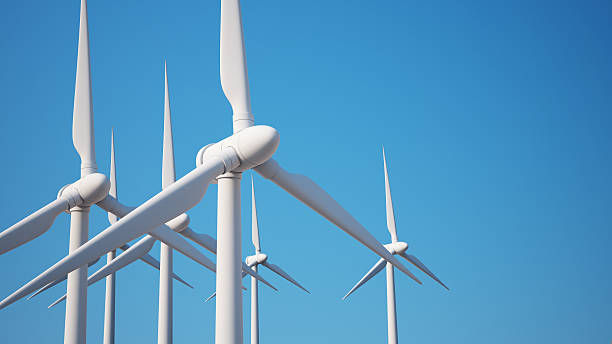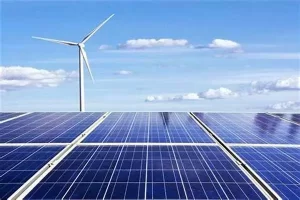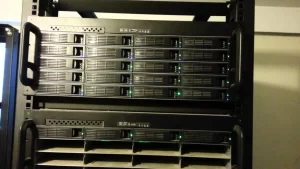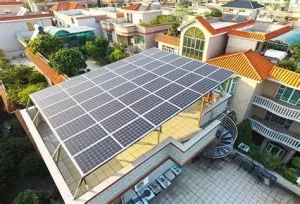Harnessing the Wind: Exploring the Power of Wind Energy Plants
In the quest for sustainable energy solutions, wind power stands as a beacon of hope and innovation. Across the globe, wind energy power plants are not just symbols of progress but pillars of a cleaner, greener future. Let’s delve into the fascinating world of wind energy and discover how these power plants are transforming the landscape of global energy production.

The Rise of Wind Energy
Wind energy has a rich history dating back centuries, from the windmills of olden times to the modern wind turbines that now dot our horizons. What once was a simple mechanism for grinding grain or pumping water has evolved into a sophisticated means of generating electricity on a large scale.
Today, wind energy plays a pivotal role in the global energy mix, offering a renewable alternative to fossil fuels. As concerns over climate change and environmental sustainability grow, wind power has emerged as a leading contender in the race to reduce carbon emissions and mitigate the impact of human activities on our planet.
How Wind Energy Power Plants Work
At the heart of every wind energy power plant are the towering structures known as wind turbines. These turbines capture the kinetic energy of the wind and convert it into electrical power through a series of intricate mechanisms.
- Turbine Design: Modern wind turbines consist of three primary components: the tower, the blades, and the nacelle. The tower provides height to elevate the turbine into stronger, more consistent winds found at higher altitudes. The blades, often spanning lengths equivalent to a football field, are designed to capture as much wind energy as possible. The nacelle sits atop the tower and houses the gearbox, generator, and other critical components that convert mechanical energy into electrical energy.
- Wind Capture: Wind turbines are strategically placed in areas with high average wind speeds, typically in coastal regions, plains, or mountain passes where wind flow is consistent and strong. Advanced meteorological studies and wind mapping techniques help identify optimal locations for these power plants.
- Power Generation: As the wind blows, it causes the turbine blades to rotate. This rotational motion spins the shaft connected to the generator inside the nacelle, which produces electricity. The electricity generated is then transmitted via cables to the power grid for distribution to homes, businesses, and industries.
Advantages of Wind Energy Power Plants
Wind energy power plants offer a multitude of benefits that contribute to their widespread adoption and appeal:
Renewable and Sustainable: Wind is an abundant resource that will never run out. By harnessing wind energy, we reduce our dependence on finite fossil fuels and contribute to a cleaner, more sustainable future.
Environmentally Friendly: Wind power generation produces zero greenhouse gas emissions and has minimal impact on air quality compared to traditional fossil fuel-based power plants. It helps mitigate climate change and reduces our carbon footprint.
Economic Growth: Wind energy projects create jobs in manufacturing, construction, and maintenance, stimulating local economies and providing long-term employment opportunities.
Energy Independence: Wind energy diversifies our energy sources, reducing reliance on imported fuels and enhancing energy security.
Scalability: Wind farms can range from small-scale community projects to large-scale utility-grade installations, providing flexibility in meeting diverse energy demands.
Challenges and Innovations
While wind energy has numerous advantages, it also faces challenges that require ongoing innovation and investment:
Intermittency: Wind is variable and intermittent, meaning electricity generation fluctuates with wind speeds. Energy storage solutions and grid integration technologies are crucial for stabilizing supply and demand.
Land Use and Wildlife: Large-scale wind farms require significant land area and may impact local ecosystems and wildlife habitats. Proper siting and environmental assessments are essential to mitigate these impacts.
Technological Advancements: Continued advancements in turbine design, materials, and efficiency are essential for enhancing performance, reducing costs, and expanding the viability of wind energy in new regions.
The Future of Wind Energy
Looking ahead, the future of wind energy is promising. Technological advancements, coupled with supportive policies and growing public awareness, are driving rapid expansion in wind power capacity worldwide. Offshore wind farms, in particular, offer vast untapped potential for generating clean energy in coastal regions.
As we strive towards a sustainable energy future, wind energy power plants will continue to play a pivotal role in our transition to a low-carbon economy. By harnessing the power of the wind, we not only generate electricity but also cultivate a cleaner, healthier planet for future generations to enjoy.
Conclusion
Wind energy power plants exemplify the intersection of innovation, sustainability, and energy independence. From their humble beginnings to their present-day prominence, these marvels of engineering symbolize our commitment to a greener tomorrow. As we embrace the power of wind, let us envision a world where clean energy powers progress and prosperity for all.
This draft covers the essentials of wind energy power plants, highlighting their importance, workings, advantages, challenges, and future prospects. Let me know if you need any specific additions or modifications!
Contact us
- Email:[email protected]
- Tel: +86 13651638099
- Address: 333 Fengcun Road, Fengxian District, Shanghai
Get A Quote Now!

Read more

Unveiling Photovoltaic+Energy Storage: Four Major Application Scenarios Leading the Future of Energy
In this way, the energy landscape is evolving, and one of the most thrilling developments in renewables is the integration of photovoltaics energy storage.

From Theory to Practice: Four Methods for Estimating Photovoltaic Power Generation
Photovoltaic power generation has become an essential part of modern energy solutions, particularly in home solar systems and distributed power applications

Rack-Mounted Lithium Iron Batteries: Creating Efficient and Reliable Energy Storage Solutions
When it comes to modern energy solutions, rack-mounted lithium iron batteries are taking center stage in a variety of industries. Whether you’re powering data centers, stabilizing energy for households, or keeping critical systems online at 5G base stations, these batteries have become the unsung heroes of our electrified world.

Late Night Energy Saving Tips: How to Maximize Electricity Savings During Off-Peak Hours
With rising energy costs, homeowners are increasingly exploring innovative ways to save on their electricity bills. One effective approach is utilizing off-peak hours—times when electricity rates are significantly lower due to reduced demand.
